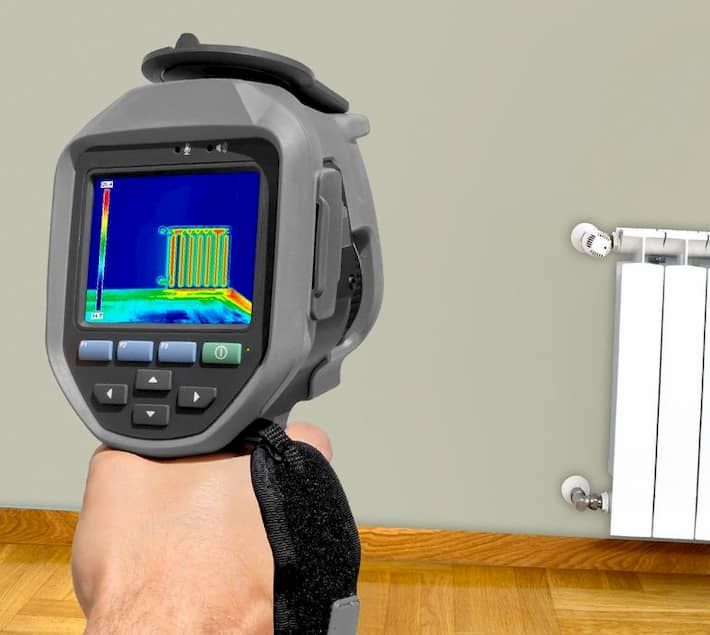When it comes to home maintenance, few issues are as deceptively damaging as water leaks. A slow drip may seem harmless, but it can silently undermine your home’s structure, encourage mold growth, and drive up your utility bills. While traditional leak detection methods like visual checks or monitoring your water meter still matter, technology now offers far more advanced tools and techniques. In 2025, advanced residential leak detection is reshaping how homeowners prevent and respond to water damage.
Why Traditional Leak Checks Aren’t Enough
Most homeowners rely on obvious signs—wet patches, musty odors, or water stains—to identify leaks. Unfortunately, by the time these symptoms appear, the damage is often well underway. Modern homes feature complex plumbing systems running through walls, floors, and ceilings, making early detection nearly impossible through sight alone. That’s why today’s leak prevention strategies have evolved beyond the simple drip test.
Advanced detection systems can locate leaks before they become visible, helping homeowners act quickly and prevent expensive repairs.
The Rise of Smart Leak Detection Technology
One of the biggest breakthroughs in modern leak prevention is smart Leak detection Liverpool. These systems use sensors and intelligent monitoring to detect abnormal water activity anywhere in the home.
Smart leak detectors can:
- Monitor water flow in real-time. Devices track your usage and flag unusual patterns, such as water running when you’re not home.
- Send instant alerts. Connected through Wi-Fi or mobile apps, they notify you the moment a leak is detected.
- Automatically shut off your water supply. Some systems can close the main valve to prevent flooding the moment a leak occurs.
- Integrate with home automation. Advanced models sync with smart home platforms like Alexa or Google Home, giving you complete control from anywhere.
These innovations mean that even if a pipe bursts while you’re away, your home can respond automatically—protecting floors, furniture, and walls from catastrophic damage.
Acoustic and Infrared Leak Detection
Professional leak detection has also embraced technology. Specialists now use acoustic sensors and infrared imaging to locate leaks within walls, slabs, and underground pipes.
- Acoustic sensors detect the sound frequencies of escaping water, even through thick materials like concrete. They can pinpoint the exact spot of a hidden leak without any invasive digging or drilling.
- Infrared cameras identify temperature variations caused by moisture. A small damp patch invisible to the eye can appear clearly on an infrared scan, making it easier to target repairs before the issue spreads.
These tools combine precision and efficiency, saving both time and money for homeowners who might otherwise face exploratory demolition to find the problem.
Moisture Mapping and Thermal Tracking
For larger properties or chronic moisture issues, moisture mapping is an advanced diagnostic method used by professionals. Using specialized sensors, technicians create a detailed image of moisture distribution throughout a structure.
This process helps determine how far a leak has spread, assess hidden water damage, and confirm whether repairs have fully resolved the issue. Similarly, thermal tracking uses continuous temperature monitoring to detect irregular heat patterns caused by trapped water behind insulation or within flooring systems.
Water Usage Analytics and AI Monitoring
Artificial intelligence (AI) now plays a key role in detecting leaks before they cause harm. By analyzing your home’s water usage patterns, AI-powered systems learn what “normal” looks like for your household. When consumption deviates—such as a sudden spike during the night—the system identifies a potential leak.
AI can also differentiate between harmless activities (like watering the garden) and problematic flow (like a leaking pipe), dramatically reducing false alarms. These insights allow for predictive maintenance, where the system can alert you about aging plumbing components that might soon fail.
Integrating Leak Detection into Smart Home Ecosystems
Leak detection doesn’t have to be a standalone feature. Many homeowners now integrate it into their smart home ecosystems, where devices communicate with each other for comprehensive protection. For instance, a leak sensor in your utility room can trigger your smart thermostat to adjust humidity levels, or your security system can send you a water damage alert alongside motion detection updates.
This integration ensures that your home remains responsive to multiple threats—security, energy efficiency, and water safety—all within a single automated network.
Preventive Maintenance in the Digital Age
While technology leads the way, prevention still starts with consistent maintenance. Even the best systems need human oversight. Regularly inspect hoses, clean gutters, and service plumbing fixtures. Use smart systems as partners, not replacements, for good home care habits.
Here’s a simple preventive checklist for the digital age:
- Install smart leak sensors in high-risk areas like basements, kitchens, and bathrooms.
- Monitor water pressure. Excessive pressure accelerates pipe wear and increases leak risks.
- Service water heaters and softeners annually. Sediment buildup can cause cracks and leaks.
- Review system reports. Many smart systems log data—checking it helps identify long-term trends.
- Test automatic shutoff features at least once a year to ensure reliability.
The Future of Leak Detection
As homes become smarter, leak detection will continue to evolve. Future systems may use nanotechnology to sense minute pipe corrosion, drones for rooftop inspections, or AI-driven predictive modeling that detects issues before a single drop escapes.
These advancements will make water damage nearly preventable, saving homeowners time, stress, and thousands in repairs.
Final Thoughts
Water leaks are silent but devastating threats to any home. Moving beyond the drip means embracing technology, adopting proactive habits, and integrating smart systems that keep your property dry and secure.
With modern leak detection methods—ranging from infrared imaging to AI-powered analytics—you no longer have to wait for visible damage to act. Today’s homeowners can stop water issues before they start, ensuring a safer, smarter, and more resilient home for years to come.


